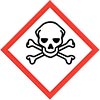Description
2-Acetylthiophene: A Key Building Block in Organic Chemistry and Modern Applications
2-Acetylthiophene is an important compound in organic chemistry, recognized for its versatility and role as a building block in a wide range of applications. Belonging to the family of heterocyclic aromatic compounds, its molecular formula is ( C_6H_6OS ), and its structure consists of a thiophene ring—a five-membered aromatic ring containing a sulfur atom—functionalized with a ketone group (-COCH₃) at the second position. This unique combination of a heterocyclic ring and a reactive functional group allows 2-acetylthiophene to play a significant role in chemical synthesis, material science, and industry.
Structural and Physical Properties
The presence of the sulfur atom in a five-membered ring endows 2-acetylthiophene with aromaticity and electronic properties distinct from typical benzene derivatives. The addition of the acetyl group further increases its reactivity, providing a reactive site for electrophilic and nucleophilic reactions.
2-Acetylthiophene appears as a pale yellow liquid at room temperature, with a characteristic odor. It is slightly soluble in water but mixes readily with organic solvents such as ethanol, ether, and chloroform due to its nonpolar nature. These properties make it a convenient reagent for organic synthesis.
Applications in Organic Synthesis
The reactivity of 2-acetylthiophene makes it a valuable intermediate in organic synthesis. The acetyl group provides a handle for a variety of chemical transformations, including aldol condensations, Knoevenagel reactions, and Michael additions, all of which are critical for constructing more complex molecules.
- Pharmaceutical Industry: 2-Acetylthiophene is extensively used to create pharmaceutical compounds, particularly those that rely on heterocyclic structures. Functionalized thiophenes derived from 2-acetylthiophene are often found in antibiotics, anti-inflammatory agents, and central nervous system drugs. For example, many thiophene derivatives exhibit antimicrobial properties.
- Agricultural Chemicals: The thiophene ring is a core unit in the synthesis of agrochemicals such as herbicides, insecticides, and fungicides. By modifying 2-acetylthiophene, scientists can create molecules with specific biological activities to combat pests and improve crop yields efficiently.
- Flavors and Fragrances: Due to the thiophene group’s aromatic characteristics, 2-acetylthiophene is also used in the flavor and fragrance industry. Modified derivatives are incorporated into artificial flavoring agents to mimic natural flavors such as roasted, nutty, or savory notes.
Role in Material Science
Beyond its use in fine chemistry and biological applications, 2-acetylthiophene plays a vital role in material science. It serves as a precursor and monomer for the synthesis of conjugated polymers, which are used in developing conducting materials, organic light-emitting diodes (OLEDs), and organic photovoltaic cells. Incorporating thiophene derivatives in these materials imparts unique electronic properties, such as enhanced conductivity and charge mobility, making them invaluable in advanced electronics.
Additionally, thiophene-based materials are used in sensors that detect chemical or biological agents due to their high sensitivity and stability. The presence of the acetyl functional group in 2-acetylthiophene provides a site for further functionalization, enabling the tailor-made design of active materials for specific sensing or electronic applications.
Environmental and Toxicological Considerations
While 2-acetylthiophene is generally considered safe for laboratory use, researchers must handle it with care to minimize exposure. Vapors can be irritants, and accidental spills can pose localized environmental risks due to the compound’s moderate water solubility. Proper disposal and containment are essential to ensure its safe use in industrial and research environments.
Synthesis of 2-Acetylthiophene
2-Acetylthiophene can be synthesized through the Friedel-Crafts acylation of thiophene with acetic anhydride or acetyl chloride in the presence of a Lewis acid catalyst, such as aluminum chloride (( AlCl_3 )). The reaction is straightforward and highly efficient, making it an accessible compound for both laboratory research and industrial production.
Conclusion
2-Acetylthiophene is a highly versatile organic compound with applications spanning pharmaceuticals, agriculture, material science, and even the flavor and fragrance industries. As research into heterocyclic compounds continues to grow, the importance of 2-acetylthiophene as a precursor and functional intermediate is poised to expand. Owing to its unique structure and reactivity, it plays a pivotal role in advancing chemical synthesis and enabling modern technological innovations.














Reviews
There are no reviews yet.